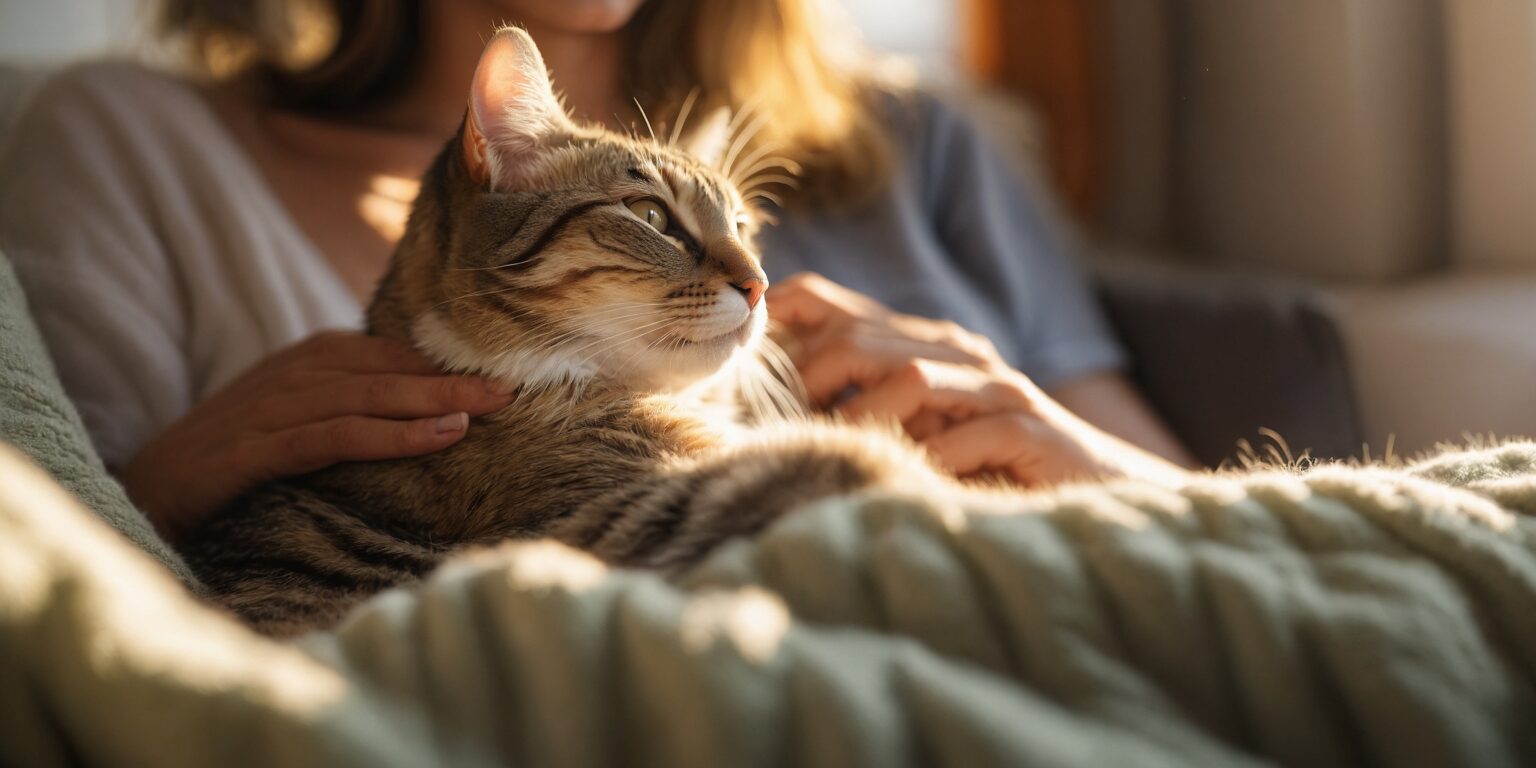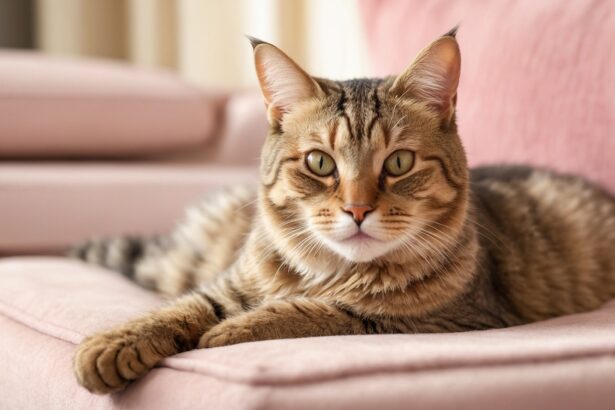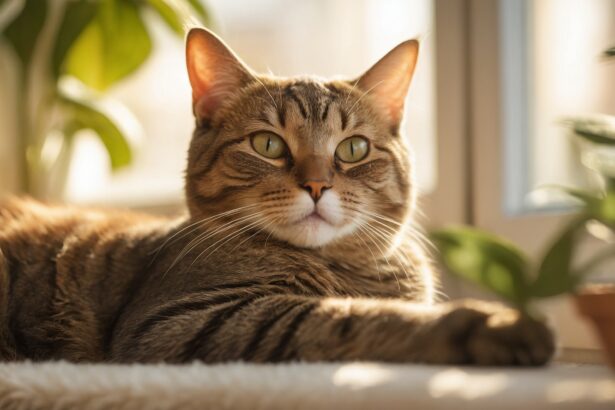That soft rumble against your arm? It’s more than cozy background noise. If you’ve ever wondered why cats purr, the truth is both tender and surprisingly clever. Here are five little secrets your feline is whispering with every vibration.
Purring as a language (and a little strategy)
Contentment you can hear
Yes, cats purr when they’re relaxed and safe. Think slow blinks, loose whiskers, a gently curved tail, and that warm jelly-belly posture. It’s your cat’s way of saying, “All is well here.”
A persuasive “please”
Some purrs have a subtle, high-pitched note mixed in, often when your cat is hungry or wants cuddles. It’s a built-in “pretty please,” made to tug your heartstrings and get you moving toward the treat cupboard.
The peacekeeping purr
Cats may purr to calm social tension, especially around other pets. It’s like humming to de-escalate a moment and say, “I come in peace.” Use these signals to pace introductions and encourage gentle play.
Curious about another comfort behavior that pairs with purring? See why cats knead and what it really means in this friendly guide: why cats knead.
Purring and health: the body’s quiet helper
That famous frequency range
Research suggests feline purrs often sit between 25–150 Hz—a range associated with tissue repair and bone health. It’s thought to support recovery, especially during rest. Your cat’s self-care routine is literally built in.
Stress down, endorphins up
Purring can release feel-good hormones, helping cats self-soothe when they’re anxious, overstimulated, or adjusting to change. It’s also why that sound calms us too—your cat’s lullaby works on both of you.
Comfort during discomfort
Here’s the twist: cats may purr when they’re in pain or unwell. It’s calming and may aid recovery, but it can also be a quiet call for comfort. If you notice purring paired with hiding, reduced appetite, or stiff movement, call your vet.
- Common mistake to avoid: assuming purr = happiness. Check the whole picture: posture, appetite, grooming, litter habits, and energy.
- Surprising fact: queens often purr during labor—both to settle themselves and reassure their kittens.
If tail talk confuses you during these moments, this explainer helps you decode moods in a glance: why cats wag their tails.
Bonding with you, one vibration at a time
A soft pledge of trust
When your cat melts into your lap and purrs, she’s choosing you. It’s an attachment signal, a little velvet-voiced “you’re my safe place.” Enjoy it—it’s good for your heart, too.
Comfort you can hear
Some cats purr when they sense your stress, lingering near your chest or neck. They’re tuning into your rhythm and offering theirs in return. It’s the sweetest kind of mutual care.
Rituals that ground your cat
A daily cuddle session around the same time can become a soothing cue. The predictability makes sensitive felines feel secure, which means… more purrs for both of you.
Nighttime crooner on your hands? Learn what those late-hour serenades mean and how to help: cats meow at night.
Purrs aren’t all alike: read the context
Happy purrs
Loose body, slow blinks, steady breathing, and a softly swishing tail. Bonus points for biscuits being kneaded into your blanket.
Self-soothing purrs
Hunched posture, tucked paws, quick or shallow breaths, dilated pupils, or hiding. This is your cue to reduce noise and give space.
Pain-associated purrs
Stiff gait, sudden irritability, poor grooming, or litter box changes. Purring here may be comfort-seeking—time for a vet check.
- Quick checklist: appetite, posture, grooming, litter habits, social interest. Two or more red flags? Book a visit.
Wondering about affectionate behaviors that often come with purring? Here’s why your cat might punctuate cuddles with gentle licks: why cats lick us.
The purr mystery we still love
Small cats vs. big cats
Most domestic cats purr; some big cats don’t. Lions and tigers can’t sustain a true purr like house cats, while cheetahs and cougars can purr but don’t roar. The anatomy of their voice boxes draws that line.
Every cat is unique
Some felines purr constantly; others save it for special moments. Frequency and volume vary with personality, age, and context. If your cat is a quiet type, it’s not a problem—just her style.
What we know, what we feel
Even without all the answers, we do know this: purring is communication, self-care, and companionship rolled into one velvet vibration. And what a gift that is.
Practical tip: Create a “purr corner” with a warm bed, a high perch, and a soft throw that smells like you. Add a scratcher nearby to complete the comfort zone. Many cats will wander over and start their little engine within minutes.
Love feline folklore as much as science? Explore where the nine lives legend comes from here: cats have 9 lives: truth or myth.
FAQ
Do all cats purr?
Most domestic cats purr, though some do it more softly or less often. Personality and context matter.
Is purring always a sign of happiness?
No. Cats also purr to self-soothe during stress, illness, or pain. Read the body language for the full story.
Why does my cat purr and then bite gently?
That can be overstimulation. Keep petting sessions short and focus on safe zones like cheeks and shoulders.
Can a cat’s purr help humans relax?
Many people find purrs calming. The sound and rhythm can reduce stress and promote a sense of comfort.








